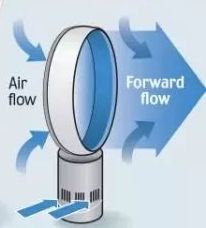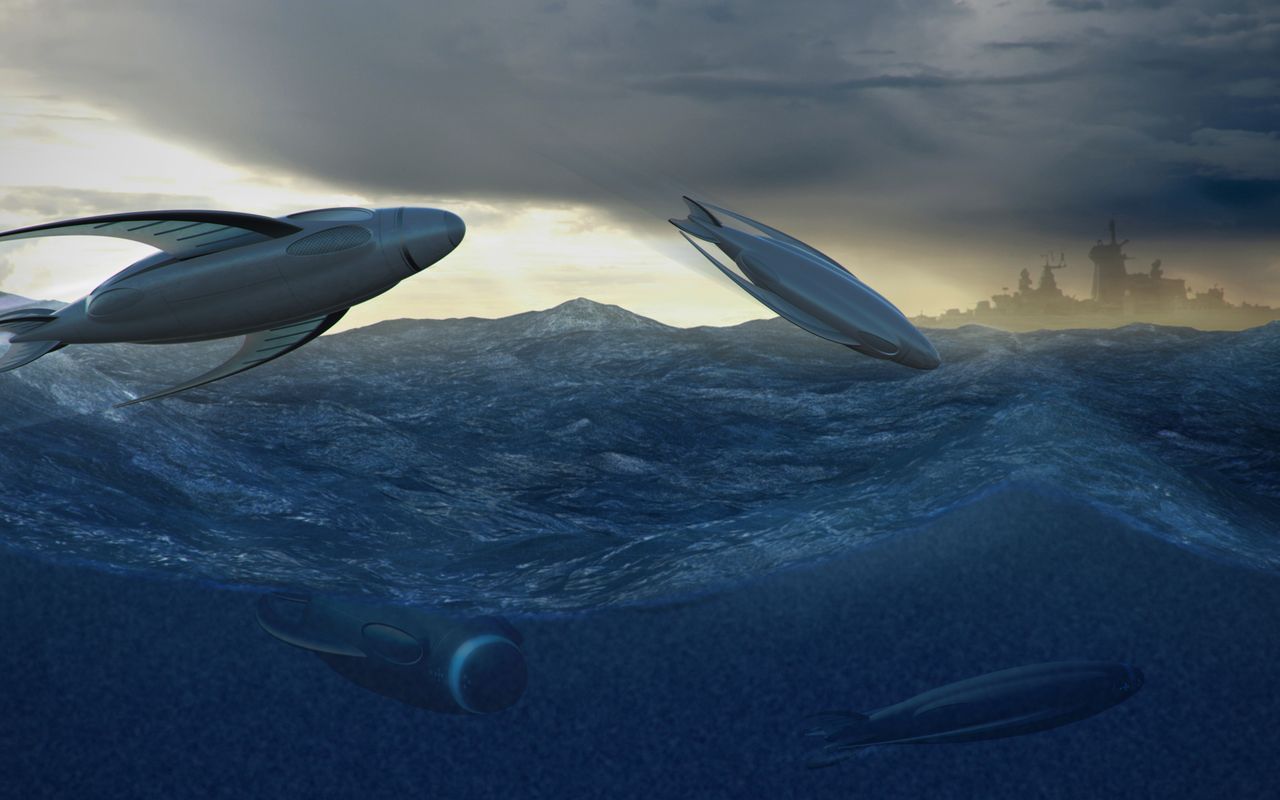By Gary Elinoff, contributing writer
In the navy of the future, today’s modus of the screw propeller will be relegated to the past. By borrowing from nature as well as adding high-techness, the U.K.’s Royal Navy is exploring ways to make ships quieter, faster, and more efficient.
Instead of using screws, for instance, consider ships being propelled in a manner similar to that of a rocket — or a squid! Squids propel themselves thru the water at speeds of 20 mph or faster by expelling water with great force from the muscular bladders within their bodies. And, because every action has an equal and opposite reaction, away goes the squid in the opposite direction. But no, the Royal Navy won’t be recruiting cephalopods, but rather they will be exploiting technology that is basically the water-based equivalent of the bladeless fan.
Bladeless fans were developed by iconic British inventor Sir James Dyson and were once applied to nothing more spectacular than ordinary cooling fans. Air is drawn in by an electric motor, as shown in the bottom section of the picture below, and is made to circulate through the ring-like structure at the top of the illustration.

Dyson Fan. Image source: Quora (edited).
Through adroit adaptation of some of the same physics that’s behind airplane wing technology, the forced air explodes out through the front of the fan and sucks in air through the rear.
In a classic example of how consumer technology and military applications can reinforce each other, the exact same thing can be done with water for ship propulsion. The result is far greater efficiency in terms of thrust-per-watt than what can be achieved with the venerable, two-century-old screw propeller. Equally important for the stealthy navies of today and tomorrow, it’s also much quieter.
Another technology being looked at are micro drones that emerge from a mother ship that have been postulated for communications and surveillance. Because they will form their own mini-internet, much like today’s mesh network, each one will be expendable, because no one drone will be essential.
In the future, it’s possible that torpedoes mimicking flying fish will swim just below the surface and, like the sea creatures they embody, will also fly above the surface. Because of the choppy sea that they generate, they will be hard to detect and even harder to target.

Flying fish torpedoes. Image source: The Telegraph.
When it comes to trusty old submarines , they might include powerful lasers to boil away water in the line of travel, leaving a bubble of air that will offer less resistance than seawater, so that in emergencies, the vessel can travel more quickly. Like a fish, these subs also will have scales; only these scales will be made of graphene and be electrically controllable. Depending on the need, the scales can be programmed either to reduce drag for greater speed or to reduce noise when stealthiness is of paramount importance.
However far-fetched some of these ideas may seem, it is important to realize that they are, for the most part, based on solid, proven technology. So, while Brittania may not exactly rule the waves anymore, Commander Peter Pipkin, the Royal Navy’s fleet robotics officer, points out in The Telegraph that, “Today’s Royal Navy is one of the most technologically advanced forces in the world.” So perhaps we shouldn’t be too surprised at the quarter that these innovations may well emerge from.
Advertisement
Learn more about Electronic Products Magazine





